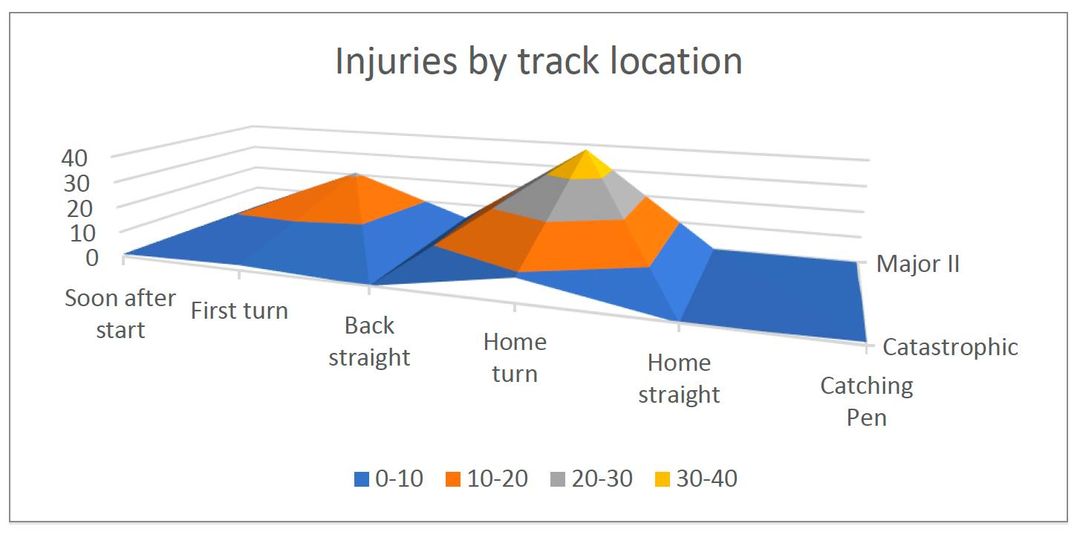
by Jeff White, Coalition for the Protection of Greyhounds
The racing injury and death report (officially called “Analysis of Greyhound Racing Injuries”) for the fourth quarter (Q4) of 2020 has been released by the NSW Greyhound Welfare & Integrity Commission. Here are the highlights:
Catastrophic injuries leading to sudden death or euthanasia
A total of 13 greyhounds suffered Catastrophic racing injuries in the last three months of 2020. These are injuries causing sudden death or requiring on-track euthanasia. One of the 13 dropped dead on the track after a race because of an internal haemorrhage from a ruptured artery.
Add to this number the 12 dogs that were euthanized off-track by private vets after suffering serious “Major II” injuries, as well as two more racing deaths at unofficial club trials, and you have a death toll of 27 directly attributable to racing.
That’s an average nine per month, or two per week. It’s also an increase from the 22 racing-related deaths in Q3 and the 21 in Q2.
These numbers do not, of course, include the many more dogs who died of illness, off-track accidents, wastage, etc.
Total injuries suffered by greyhounds
580 injuries were incurred by the 4,046 greyhounds who participated in racing in Q4. While some greyhounds sustained more than one injury, and thus fewer than 580 dogs were injured (badly enough to make the statistical summary), each racer had about a 1-in-8 chance of sustaining injury or death on the NSW tracks at some time during the quarter. As in Q3, this represented about 44 racing casualties per week.
Each racer had about a 1-in-8 chance of sustaining injury or death on NSW tracks some time during the quarter.
Serious (Major II) injuries
Major II, or serious injuries (which as noted above accounted for almost as many greyhound deaths as Catastrophic injuries), increased by 50% compared with Q3. They jumped from 42 to 63. The most common Major II injuries (63.6% of them) were hock fractures.
Expanded analysis in Q4 report
The Q4 report has expanded the range of analysis in its presentation, compared with previous quarterly reports. For example, it compares serious and catastrophic injury data on male and female greyhounds (who, for example, had a higher proportion of Catastrophic injuries in Q4 than the males).
It provides an age distribution for the dogs who sustained Major II and Catastrophic injuries, which reveals that most of the Major II injuries were suffered by three-year-olds.
Race distance also affects the serious injury rate: the least dangerous appears to be a length of 400 to 500 metres. Of course, track configuration could play a role in this, because longer races have more turns and start from different locations on the track, since all races must end at the same finish line.
Q4 data show 83% of Catastrophic injuries occurred following a collision on a turn.
Speaking of track configuration, the Q4 data show 83% of Catastrophic injuries occurred following a collision on a turn. And the most dangerous part of the tracks is the “home turn”, if I am correctly interpreting the odd-looking diagram reproduced below.
